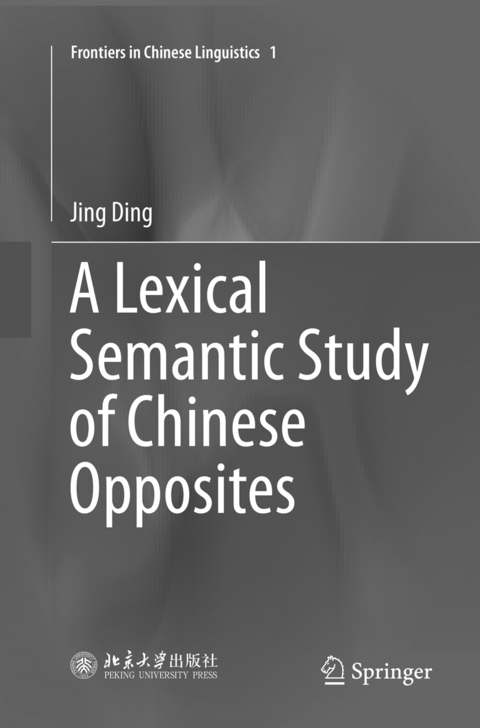
A Lexical Semantic Study of Chinese Opposites
Springer Verlag, Singapore
978-981-13-4820-4 (ISBN)
This study appeals to linguists, computational linguists and language-lovers. With numerous tables, illustrations and examples, it is easy to read but also encourages readers to link their personal instincts with the results from a large corpus to experience the beauty of language as a shared human resource.
Dr. Jing Ding is presently a research fellow at the School of International Education, South China University of Technology. She received her PhD from The Hong Kong Polytechnic University, Hong Kong SAR, in 2015. Her main research interests are lexical semantics and computational linguistics. She has published papers in the Proceedings of the Chinese Lexical Semantics Workshop.
1. Introduction.- 1.1 Motivations.- 1.2 Research Questions.- 1.3 Organization of Chapters.- 2. Literature Review.- 2.1 Definition and Categorization.- 2.2 Some Properties of Being Opposites.- 3. Opposites in Constructions.- 3.1 Research Question.- 3.2 Methodology, Candidate List and Corpus.- 3. 3 Results.- 3. 4 Discussion.- 3.5 Summary.- 4. Opposites in Discourse.- 4.1 Research Question and Previous Experiments.- 4.2 Methodology, Candidate List and Corpus.- 4.3 Result.- 4.4 Discussion.- 4.5 Summary.- 5. Opposites and Negation.- 5.1 Research Question.- 5.2 Methodology, Candidate List and Corpus.- 5.3 Result.- 5.4 Discussion.- 5.5 Summary.- 6. Conclusion.
| Erscheinungsdatum | 20.12.2018 |
|---|---|
| Reihe/Serie | Frontiers in Chinese Linguistics ; 1 |
| Zusatzinfo | 19 Illustrations, color; 3 Illustrations, black and white; XIX, 135 p. 22 illus., 19 illus. in color. |
| Verlagsort | Singapore |
| Sprache | englisch |
| Maße | 155 x 235 mm |
| Themenwelt | Geisteswissenschaften ► Philosophie ► Erkenntnistheorie / Wissenschaftstheorie |
| Geisteswissenschaften ► Philosophie ► Metaphysik / Ontologie | |
| Geisteswissenschaften ► Sprach- / Literaturwissenschaft ► Sprachwissenschaft | |
| Sozialwissenschaften | |
| Schlagworte | Chinese language • Computational Linguistics • Corpus-based • Discourse Function • GigaWord • Lexical Semantics • Syntactic Frames |
| ISBN-10 | 981-13-4820-0 / 9811348200 |
| ISBN-13 | 978-981-13-4820-4 / 9789811348204 |
| Zustand | Neuware |
| Haben Sie eine Frage zum Produkt? |
aus dem Bereich

![Was heißt Denken?. Vorlesung Wintersemester 1951/52. [Was bedeutet das alles?] - Martin Heidegger](/media/113619842)
